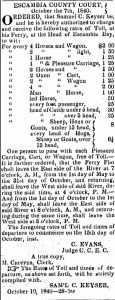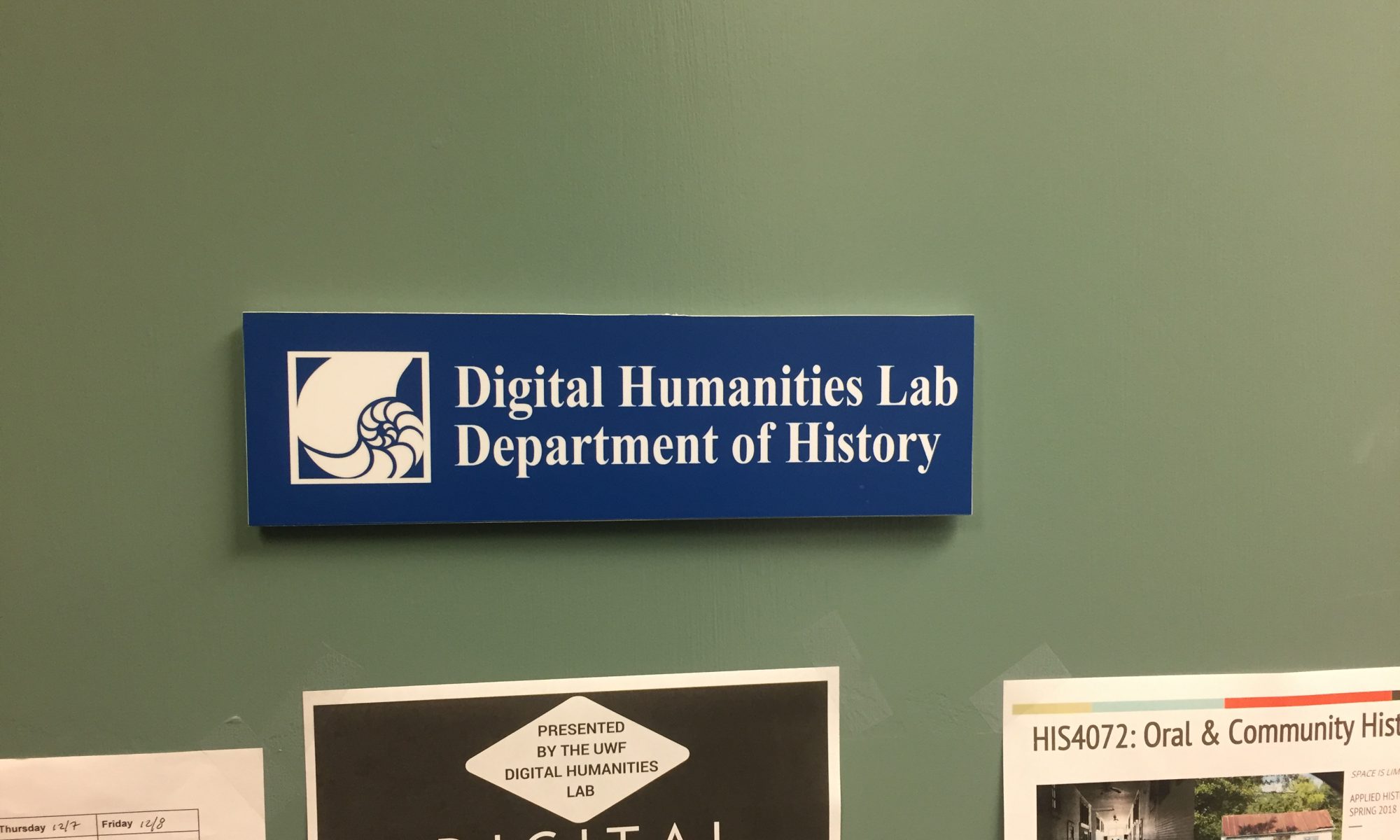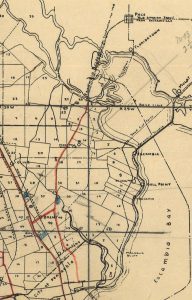
Ferry Pass, an unincorporated community north of Pensacola, once hosted a ferry service that facilitated travel across Escambia Bay. Established at the mouth of the Escambia River in the 1820s by Charles Beeler, the northern entrepreneur recognized the potential economic significance of the area. Beeler envisioned a new town with housing accommodations, a store, and a ferry service to reach the eastern part of the bay. Beeler named the area “Beelersville.” Ultimately, Beeler’s venture failed and he left the area in the mid-1820s. However, others continued to recognize the value of the ferry service and permission to operate a ferry at the location persisted into the 1850s.
The outbreak of the Civil War in 1861 interrupted the service of the Ferry Pass route. The hardships Escambia County endured halted the ferry service across the bay for a significant amount of time. The state legislature authorized a ferry near Ferry Pass in 1877. However, the construction the Pensacola and Atlantic Railroad and a trestle across Escambia Bay connected the county with the rest of West Florida by the 1880s.
The ferry service across Escambia Bay reentered the public conversation in 1910, after a newspaper article detailed the public’s desire for a service between Ferry Pass and the growing resort community of Floridatown. The newly-built ferry entered service in June 1915. The reestablished ferry service aided both areas in economic growth and improved infrastructure. Escambia County upgraded roads from Pensacola to Ferry Pass, ferry operators updated ferry facilities at both landings, and Santa Rosa invested in road improvements between Milton and Floridatown. The ferry service also sparked competition with a rival ferry, the Missing Link of Mulat, a competing bay resort south of Floridatown. The Ferry Pass service changed hands and landings several times from 1918 to 1920, but normalized its scheduled route around June 1920. Eventually, after the opening of the causeway across the bay and rivers, the ferry service ceased operations in 1926.
After the discontinuance of the ferry service across the bay, the site of the former ferry landing on the Escambia River redeveloped into a private boat launch, marina, and fishing business. Furthermore, modern improvements to the Highway 90 causeway placed the route of the highway’s bridges over the old ferry landing. On the Santa Rosa side of the route, the Floridatown ferry landing disappeared as well as most of the structures of the former resorts.
Recommended Readings:
Green, Laurie. “Other Towns.” In Images of America: Santa Rosa County, 107-127. Charleston: Arcadia Publishing, 1998.
Territory of Florida. “Bill to authorize Samuel C. Keyser.” In General Acts, Resolutions and Memorials Adopted by Legislature of Florida, 338. Tallahassee: William Wilson, 1835. Accessed April 30, 2017. https://books.google.com/books?id=P4BPAQAAMAAJ
Featured Image:
Andrade, Spenser. Ferry Pass Bayou. Photo. History Department, University of West Florida. March 2017. – Taken underneath the Highway 90 Bridge that spans the Escambia River and Ferry Pass Bayou, this photo shows the former location of the Ferry Pass – Floridatown ferry launch.
Author: Spenser Andrade
Researcher ID: 0000-0002-7044-8500



